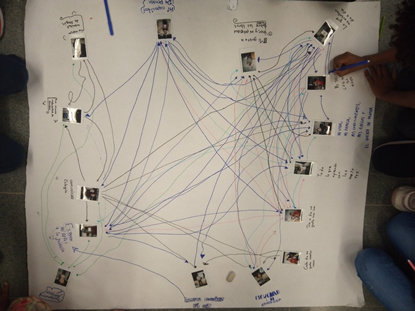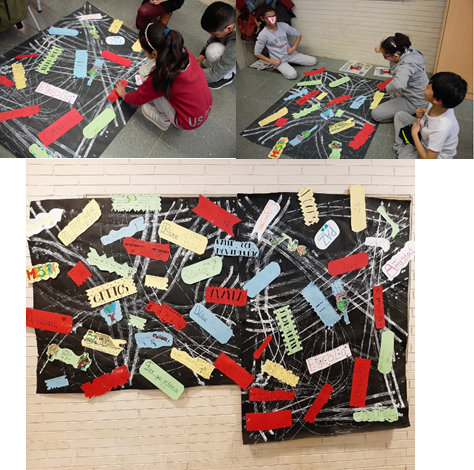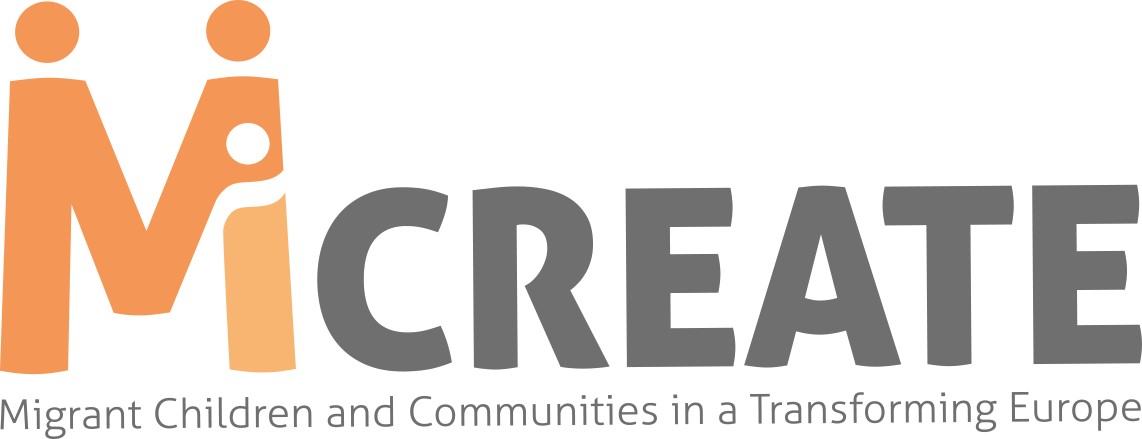By Juana M. Sancho-Gil and Sandra Soler-Campo
Last March (now, with the COVID-19 situation, it feels like decades ago!) we had the pleasure to carry out fieldwork with children in three primary schools. In this post, we give account of several episodes of the child-centred approach developed in one of them, using arts-based methods. The openness of this perspective allowed us to deeply engage children in the inquiry practices, and involve several high school students from another school.
Learning to live together
We had four intensive working sessions with two groups of 11-12-year-olds in their last year of primary school. The general shared topic, following the project’s guidelines, was “learning to live together”. In the first session, we explained to the children what the MiCREATE project is about in 5 summary cards, and we proposed them to introduce themselves to the others performatively, using an object with special meaning for them. Then, to obtain a global and visual overview of the students in the class, we took photos of each of them with a Polaroid camera, and asked them to place their photos on a large white sheet of paper, together with what they thought was their best personal quality in writing. Then they sat around and decided how they felt connected with their classmates’ descriptions.

That allowed us to talk about who they are and what their photos say. The conversation was lively, and they felt quite engaged and interested in the others.
Lifelines
In a second moment, which lasted two days, we proposed children to draw and share their lifelines. We were happily surprised by the interest and enthusiasm on display. Some complained about their lack of skills to visually express what they wanted to represent and asked researchers for help, but all of them finished the task of drawing and explaining their lifelines to their mates, and felt quite satisfied. We started with a quote of Samuel Becket, “Dance first. Think later. It’s the natural order”, and started the session with a body dynamic: we held hands in a circle in the centre of the classroom and danced together.

School Cloud
In the last session, before asking them about their impressions of the work done and their most relevant learning, we suggested them to write, on different sheets of paper and in various colours, a word to answer each one of these questions:
- If school was a word… what would it be?
- If school was a wish… what would it be?
- If school was a movement… what would it be?
- If school was a sound… what would it be?
They placed all the words in a large sheet of paper to draw the School Cloud.

Analysing the School Cloud, we came up with the idea of writing a rap song with all these words, but we were not able to propose this to the group as COVID-19 sent us all home for the rest of the academic year. And this was how work done by this group of children travelled to another school.
A travelling cloud
The music production was developed in a secondary school in Barcelona. This school is not part of the project but, through music, 15-16-year-old students made this compelling contribution based on the work carried out for MiCREATE. Building on the School Cloud created by 6th graders, these students created a cloud of concepts from their experiences and views of school. Considering these concepts, these young people made musical compositions also echoing current issues that affect them, including the COVID-19 pandemic. The musical genre used was rap, since the rhythm of this musical style was being worked on in music class. Students had the freedom to create their music productions with or without an instrument and focus on a preferred topic. The only constraint was to use the keywords that emerged from the work done previously at the primary school. Finally, the rap songs were recorded and shared with the MiCREATE project.
Here are a few samples of the students’ work:
